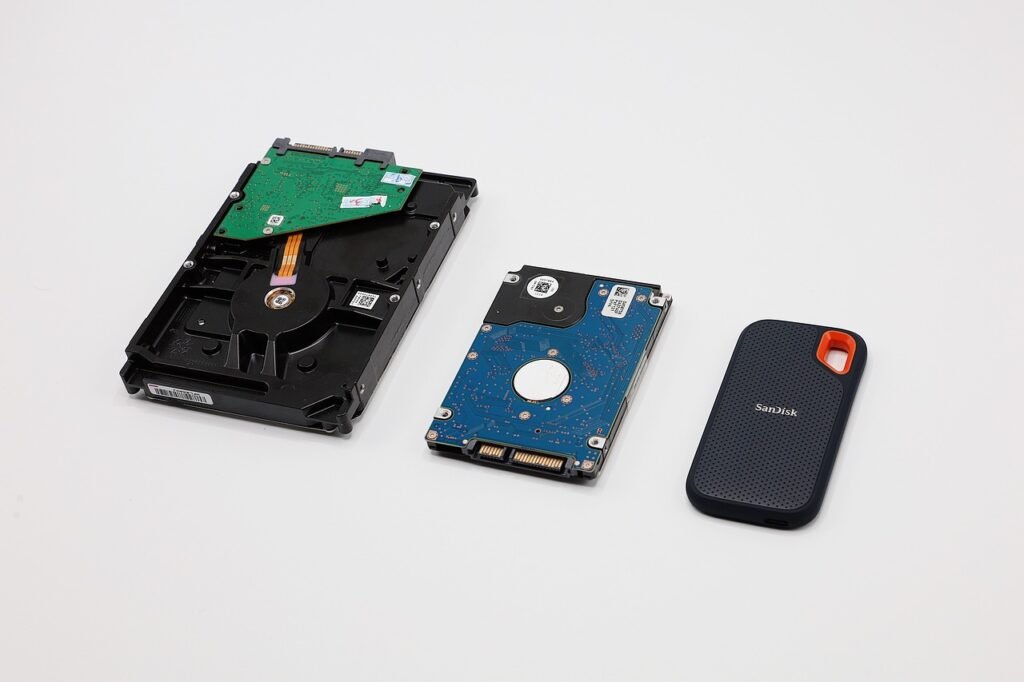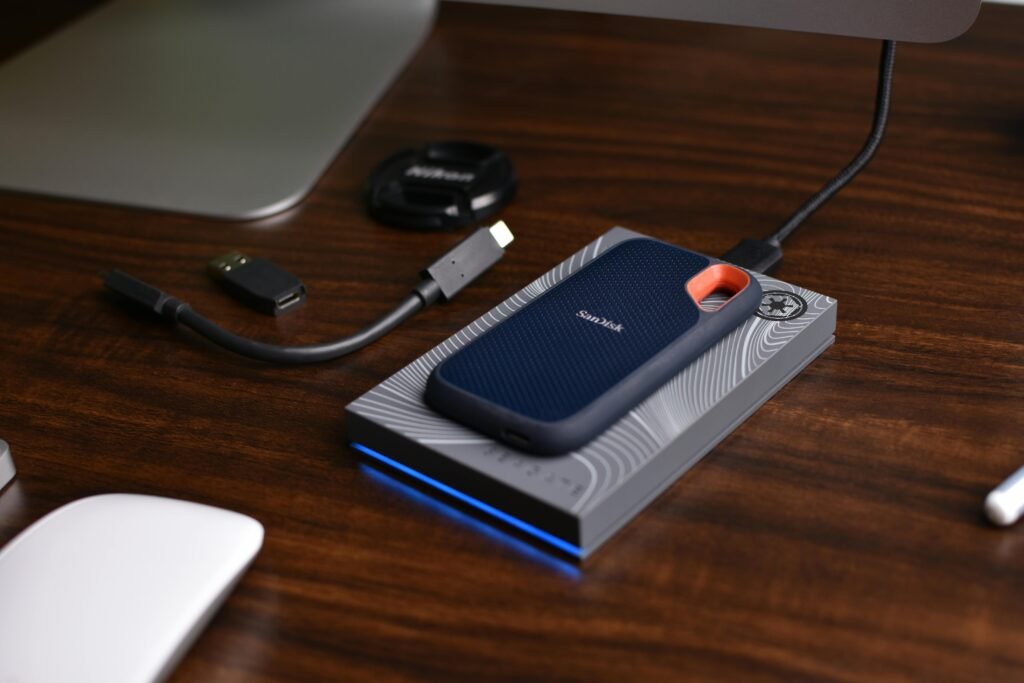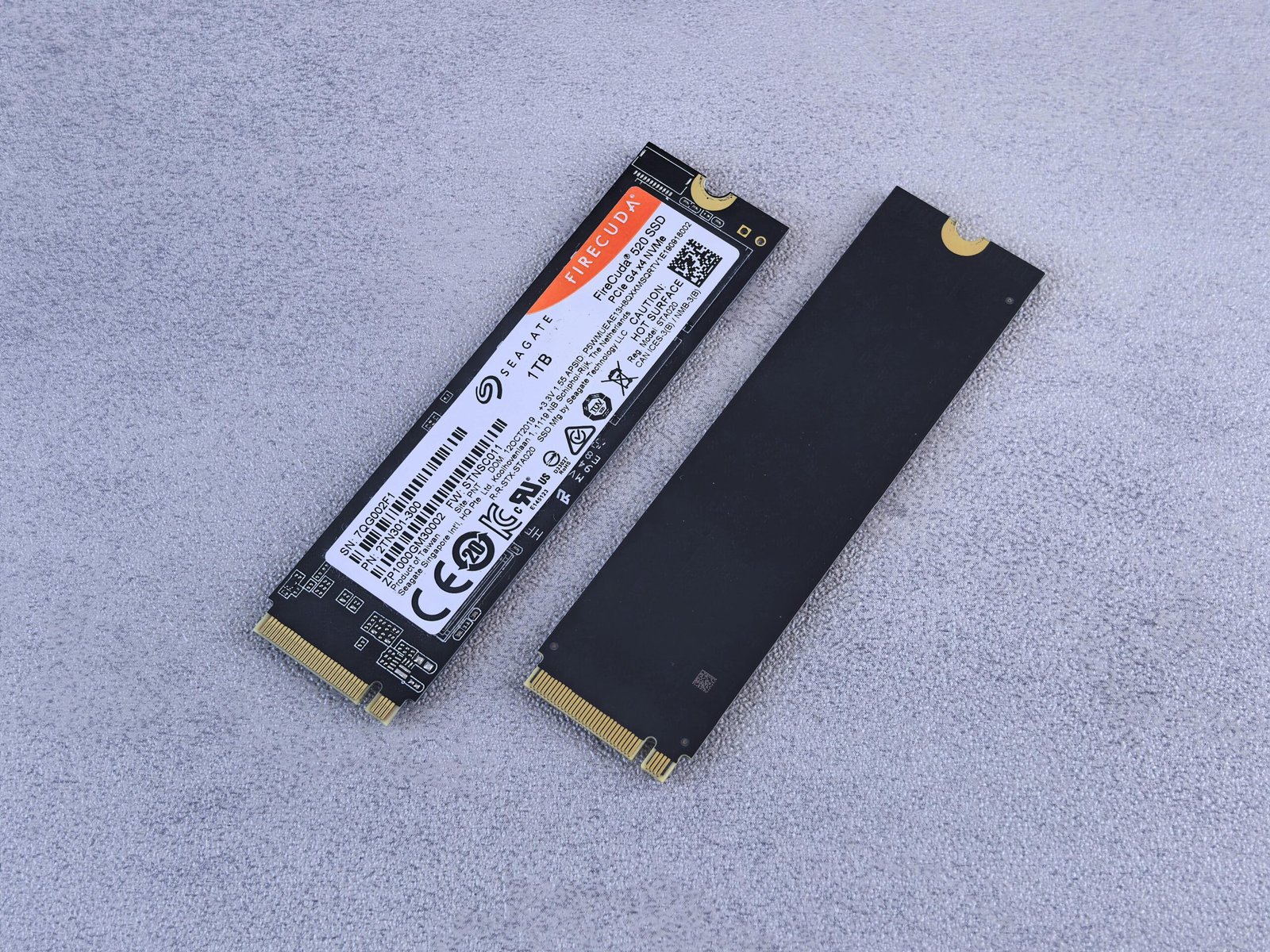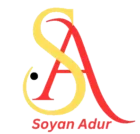The hard drive is where your software, documents, and other files are stored. The hard drive is long-term storage, which means the data is still saved even if you turn the computer off or unplug it.
1. Mechanical Disk(HDD)
HDDs have dominated the storage economy for decades. These traditional drives have a spinning platter covered in a magnetic material and use mechanical components such as read or write heads to store and retrieve data.
The so-called “traditional” hard disk. Has a motor and “read-write head”, thus rightfully called “mechanical”. Not that it is bad, it’s just heavier and less shock resistant.

2. Solid State Disk (SSD)
Solid state drives, or SSDs, use flash memory chips to store data and have no mechanical storage mechanisms. This makes them less noisy, more power-efficient, and more resistant to shocks and vibrations.

3. SSHDs
SSHDs consist of a traditional HDD with a small amount of integrated flash memory. which combines the benefits of HDDs and SSDs into one cohesive package.
4. M.2 SSD

As computers become slimmer and smaller, there is also a need to make smaller hard disks. The M.2 SSD is a variant of the “normal SSD” with a smaller footprint.
5. Types of Interfaces
- Parallel Advanced Technology Attachment (PATA)
- Serial Advanced Technology Attachment (SATA)
- Small Computer System Interface (SCSI)
- NVMe (Non-volatile Memory Express)
6. Types of HDD
1-Hard Disk Drive (HDD)
2-Solid State Drive (SSD)
3-(SSHDs)
4-M.2 SSD
7. Sizes of HDD
16 GB, 32 GB, and 64 GB and above.


